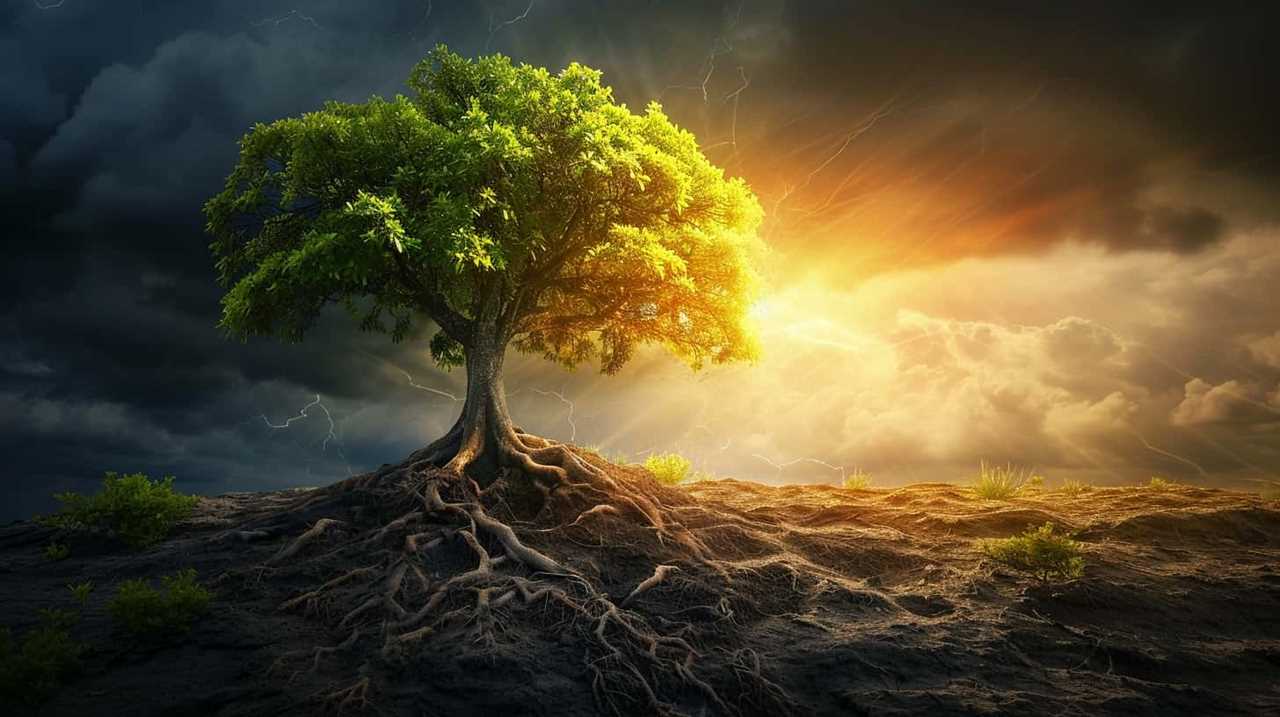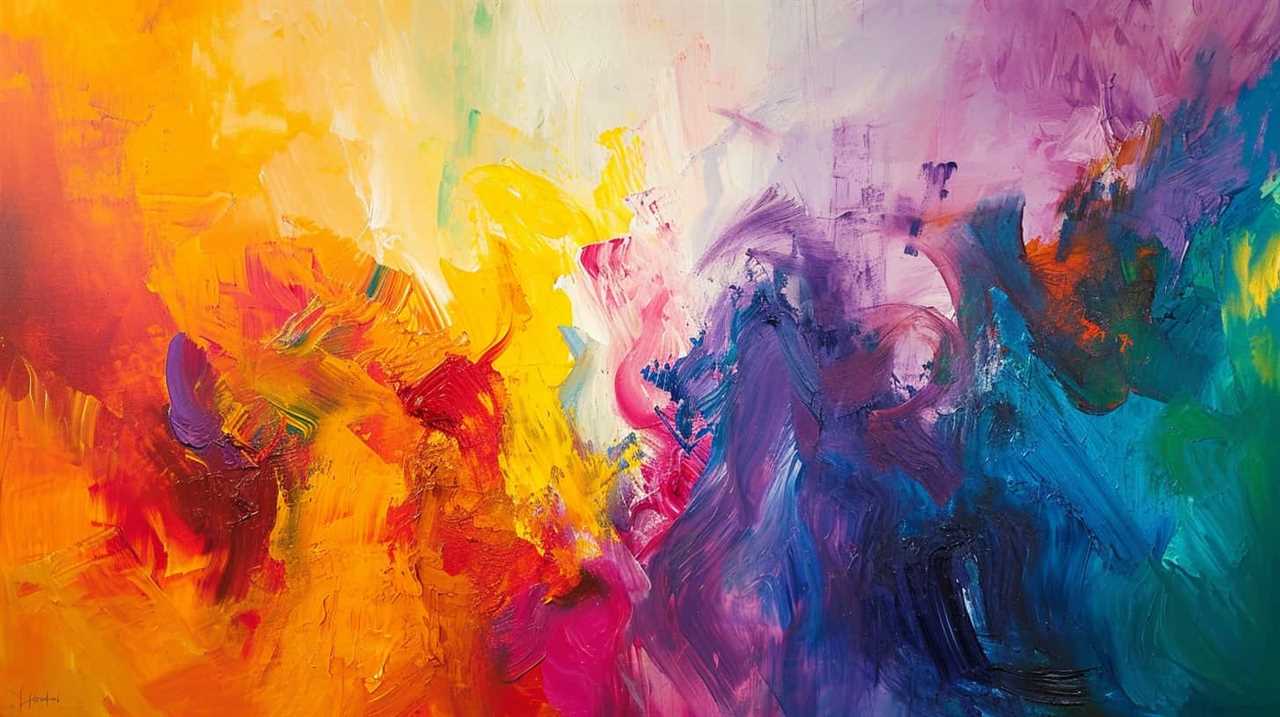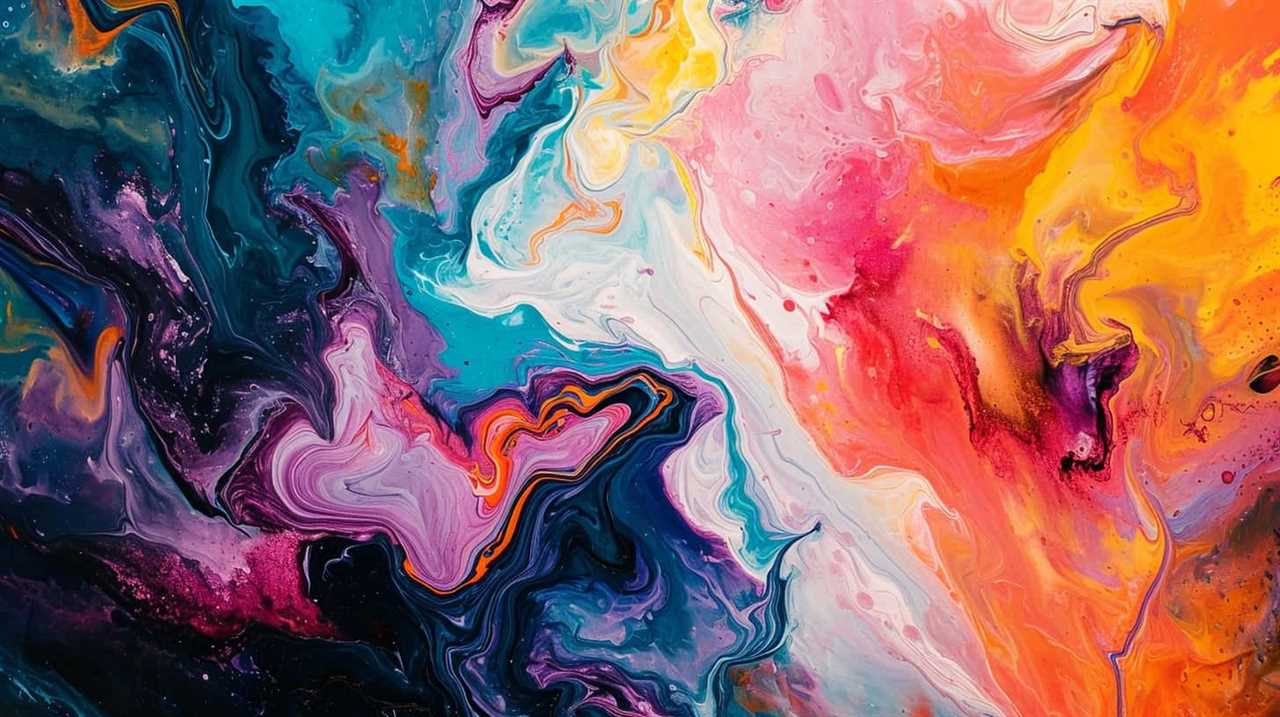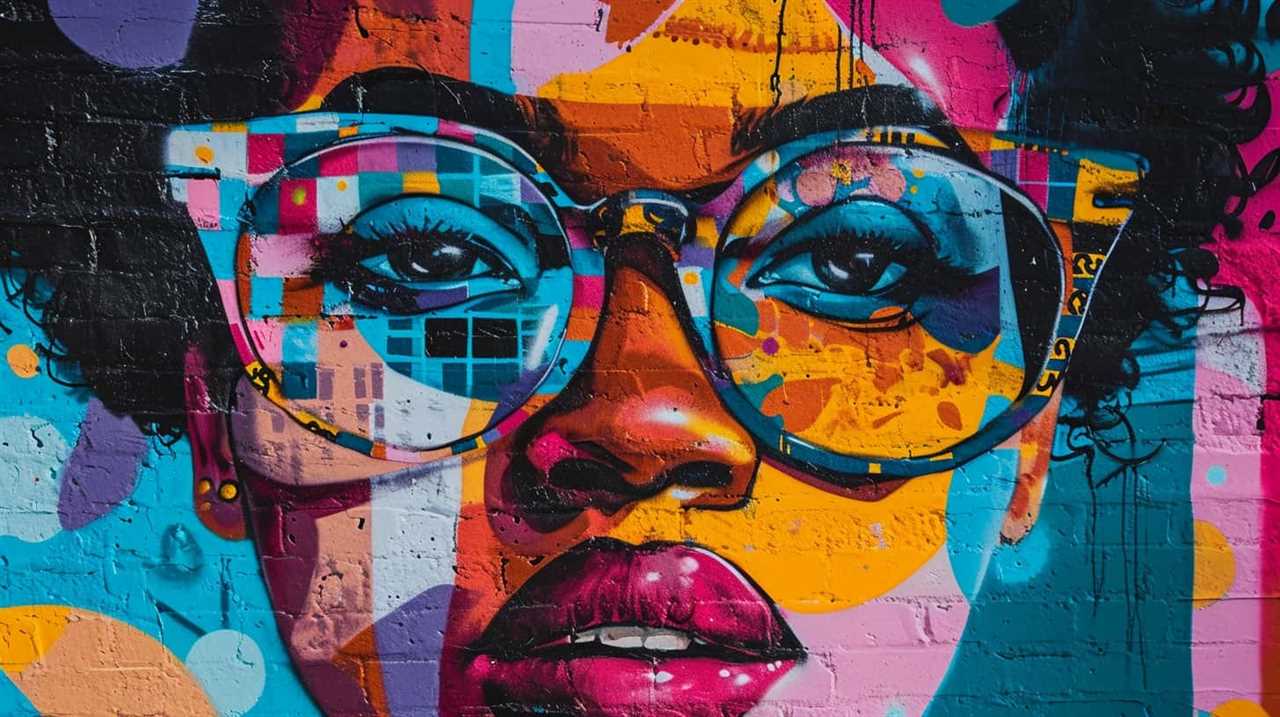When we study the lives and creations of famous artists like Picasso, Van Gogh, Monet, Dali, Frida Kahlo, Pollock, Da Vinci, Matisse, and Turner, we can see a common theme – their profound respect for the process of creating art.
Take, for instance, the case of Van Gogh, who believed that artistic inspiration came from capturing the essence of the world around him through his unique perspective. These artists recognized that the journey of creation is just as valuable as the end result. They understood that mastery in their craft required embracing experimentation, personal expression, spontaneity, and even multidisciplinary approaches.
By delving into the depths of the creative process, these artists were able to push boundaries, challenge conventions, and leave a lasting impact on the artistic world.
In this exploration, we uncover why renowned artists place such high value on the creative process.
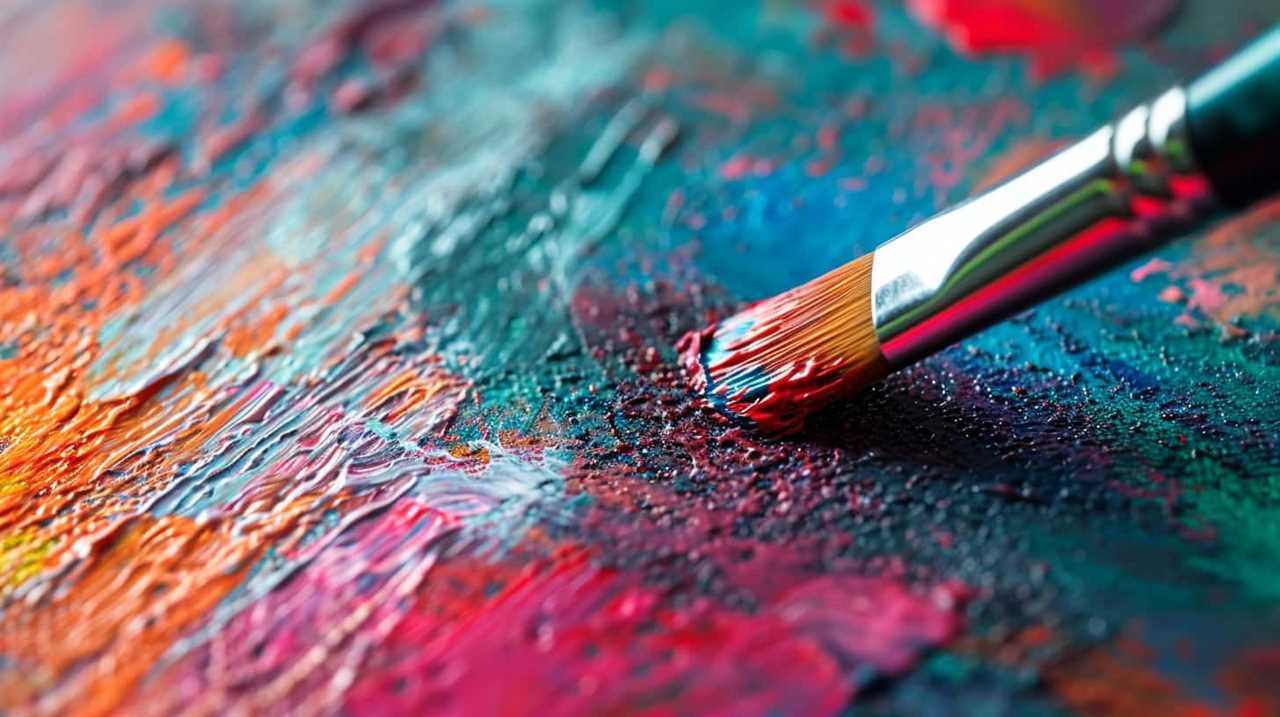
Key Takeaways
- Picasso, Van Gogh, Monet, Dali, and O’Keeffe all believed that the creative process of making art is just as important as the final result.
- Artists like Picasso, Van Gogh, and Monet used various techniques and approaches to evoke emotions, capture the essence of their surroundings, and experiment with light and color.
- Artists like Van Gogh, Dali, O’Keeffe, and Da Vinci found inspiration in the natural world, everyday life, their own experiences, and the works of other artists.
- Renowned artists like Van Gogh, Dali, Warhol, and O’Keeffe have had a significant impact on the art world and continue to inspire and influence other artists.
Picasso’s Perspective on the Creative Process
In our exploration of renowned artists’ perspectives on the creative process, we delve into Picasso’s unique take on the subject.
Picasso was a master of artistic techniques, constantly pushing the boundaries of what was considered possible in art. He believed that the process of creating art was just as important as the final result.
Picasso’s use of color, like Van Gogh’s, was revolutionary. He used vibrant and contrasting hues to convey emotion and create a sense of depth. His use of color wasn’t limited to realistic representation but rather aimed to evoke an emotional response from the viewer.
Picasso believed that art should challenge conventions and push the boundaries of what was considered acceptable. He saw the creative process as a journey of self-discovery, a way to explore and express one’s innermost thoughts and emotions.

Picasso’s insights into the creative process provide a valuable perspective on the importance of experimentation, self-expression, and pushing the boundaries of artistic techniques.
Transitioning into Van Gogh’s insights into artistic inspiration, we can see how his unique perspective adds to our understanding of the creative process.
Van Gogh’s Insights Into Artistic Inspiration
Van Gogh’s artistic vision and his sources of inspiration provide valuable insights into the nature of artistic inspiration. His bold and vibrant brushstrokes, coupled with his deep emotional connection to his subjects, reveal a unique perspective on the creative process.
Through his use of color and texture, Van Gogh was able to capture the essence of his surroundings and convey his innermost thoughts and emotions. Understanding his approach to artistic inspiration can offer valuable lessons to aspiring artists and deepen our appreciation for his remarkable body of work.
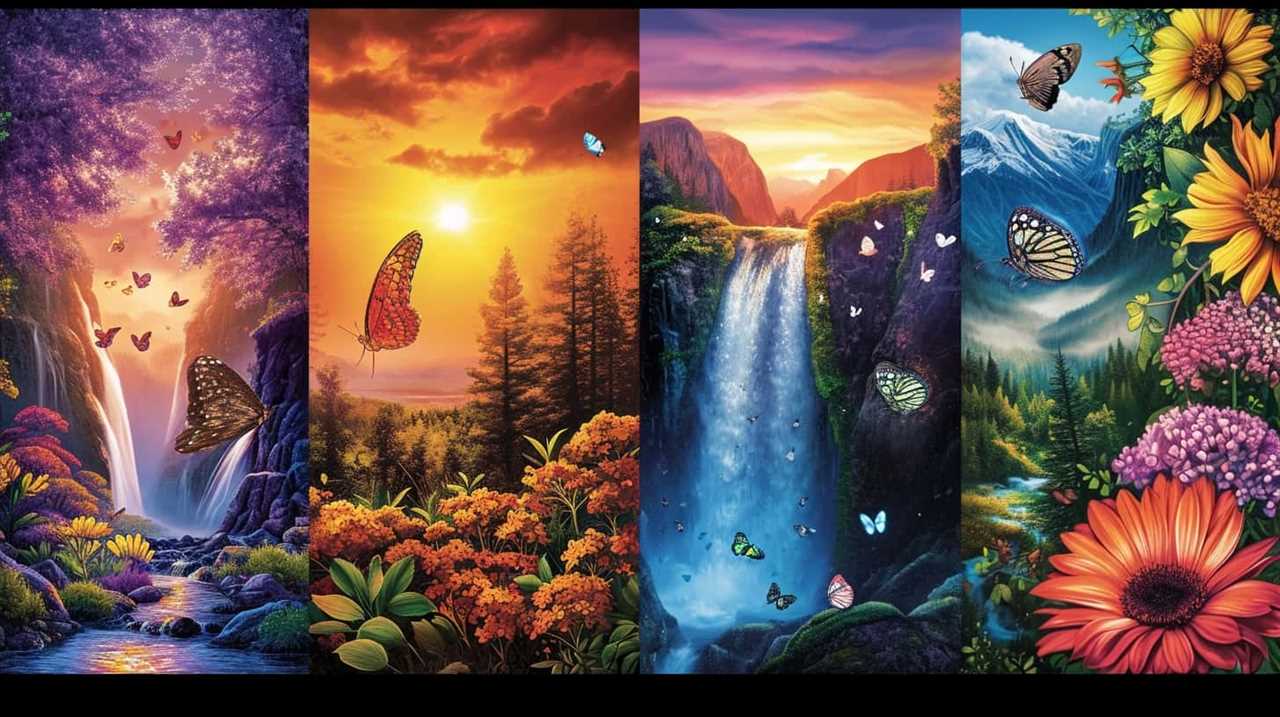
Van Gogh’s Artistic Vision
As we delve into the topic of renowned artists’ appreciation for the creative process, it’s essential to explore Van Gogh’s profound insights into artistic inspiration.
Van Gogh’s artistic vision was marked by his unique color palette and brushwork technique, which set him apart from his contemporaries. His vibrant and expressive use of color reflected his emotional state and allowed him to convey a sense of energy and movement in his paintings.
Van Gogh’s brushwork technique, characterized by bold and deliberate strokes, added texture and depth to his artwork, creating a dynamic visual experience. Through his use of color and brushwork, Van Gogh was able to capture the essence of his subjects and evoke powerful emotions in the viewer.
His artistic vision continues to inspire and resonate with artists and art enthusiasts alike, showcasing the importance of exploring one’s own creative process.
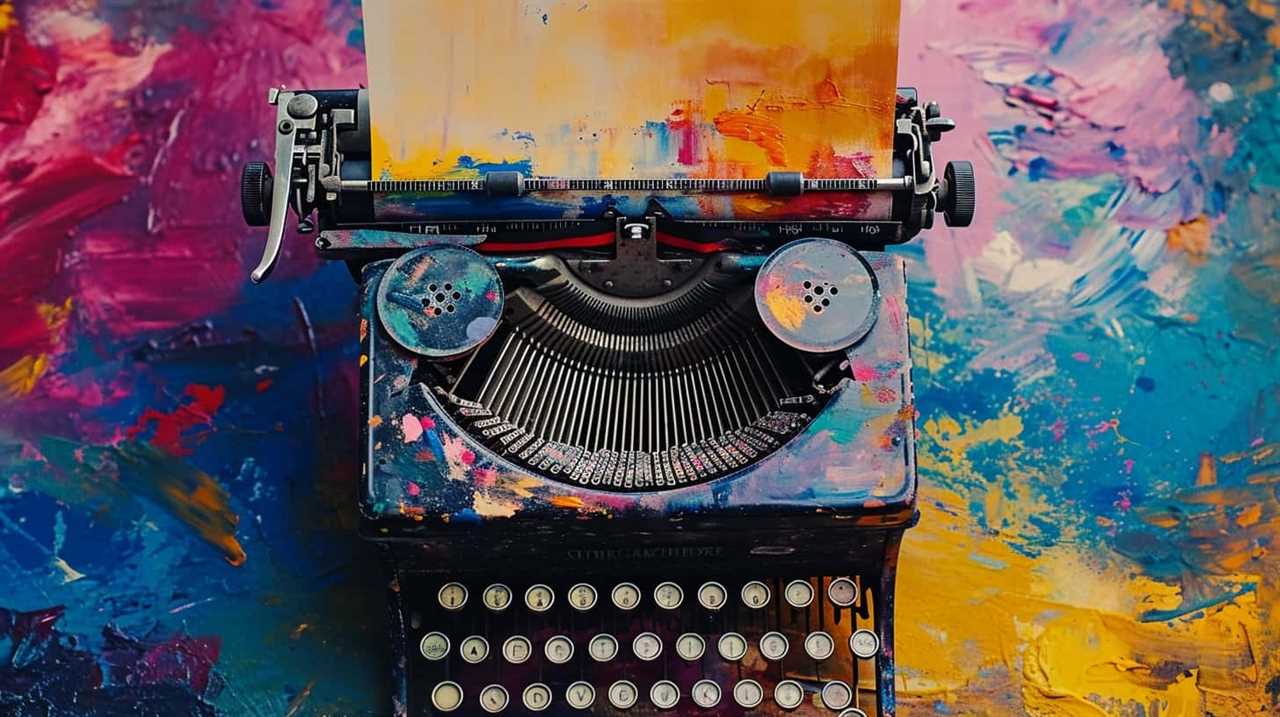
Sources of Inspiration
Why do renowned artists find inspiration in Van Gogh’s insights into the artistic process?
Van Gogh’s understanding of the sources of inspiration and the importance of experimentation resonates deeply with artists who strive for mastery. His insights offer valuable guidance for those seeking to tap into their own creative wellsprings.
Consider the following:
- Nature’s beauty: Van Gogh found inspiration in the natural world, capturing its vibrant colors and dynamic shapes in his paintings.
- Emotional expression: He believed that art should evoke strong emotions, encouraging artists to delve into their own feelings and experiences.
- Everyday life: Van Gogh saw beauty in the ordinary, finding inspiration in the mundane and capturing the essence of daily existence.
- The self: Through self-reflection and introspection, he believed artists could tap into their unique perspectives and create truly authentic works.
Van Gogh’s emphasis on experimentation and finding inspiration in the world around us continues to inspire and guide artists today.
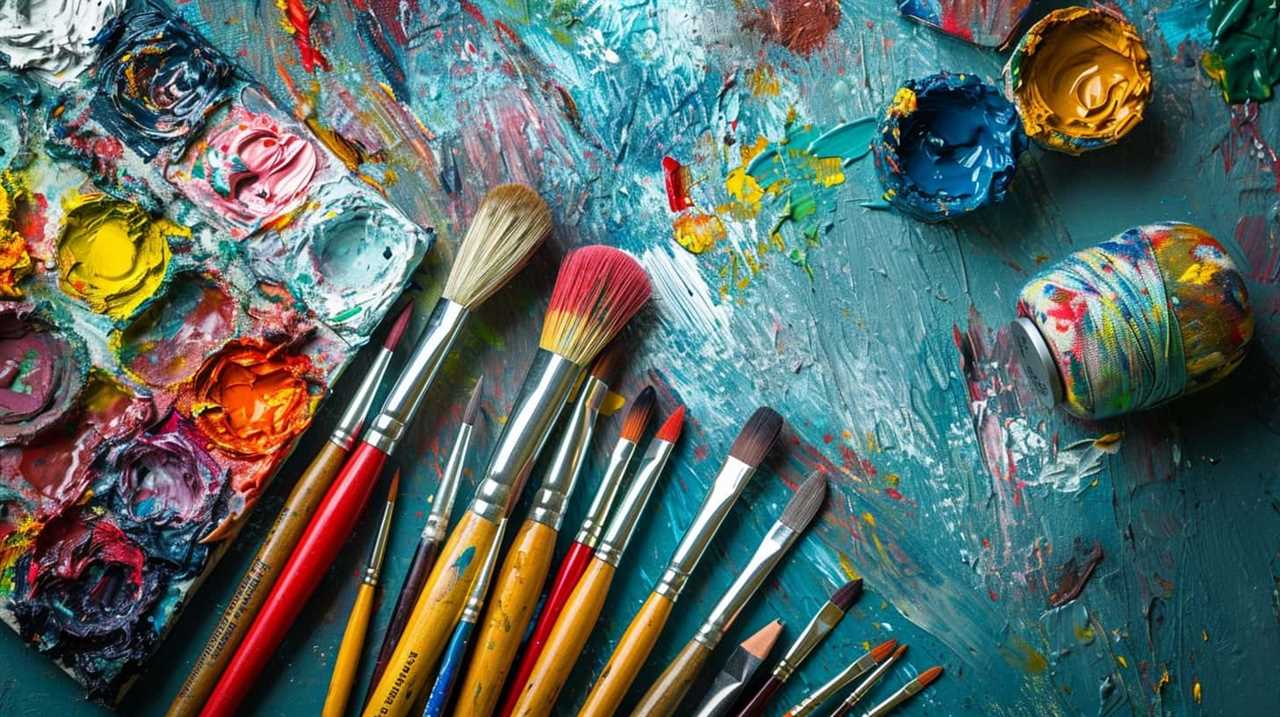
Monet’s Reflections on the Importance of Experimentation
In our exploration of renowned artists’ value of the creative process, we now turn to Monet’s reflections on the crucial role of experimentation. Monet, known for his masterful use of light and color, believed that experimentation was essential in pushing the boundaries of artistic expression. He understood that through exploration and trial and error, new possibilities could emerge.
Monet’s approach can be best understood through a comparison to Van Gogh’s emotional expression through brushwork. While Van Gogh used bold and dynamic brushstrokes to convey his inner turmoil, Monet focused on capturing the ever-changing effects of light and color. He believed that by continuously experimenting with different techniques and materials, he could better capture the fleeting nature of his subject matter.
To illustrate Monet’s dedication to experimentation, consider the following table:
| Experimentation | Results |
|---|---|
| Changing brush size | Varied brushstrokes, different textures |
| Mixing colors | Vibrant and harmonious palettes |
| Using unconventional materials | Unique textures and effects |
| Altering composition | Enhanced visual impact |
Through these experiments, Monet was able to create a body of work that revolutionized the art world. His emphasis on experimentation serves as a reminder to artists and enthusiasts alike of the importance of embracing the unknown and pushing the boundaries of their own creativity. By venturing into uncharted territory, Monet demonstrated that true artistic breakthroughs are often the result of daring exploration and relentless experimentation.
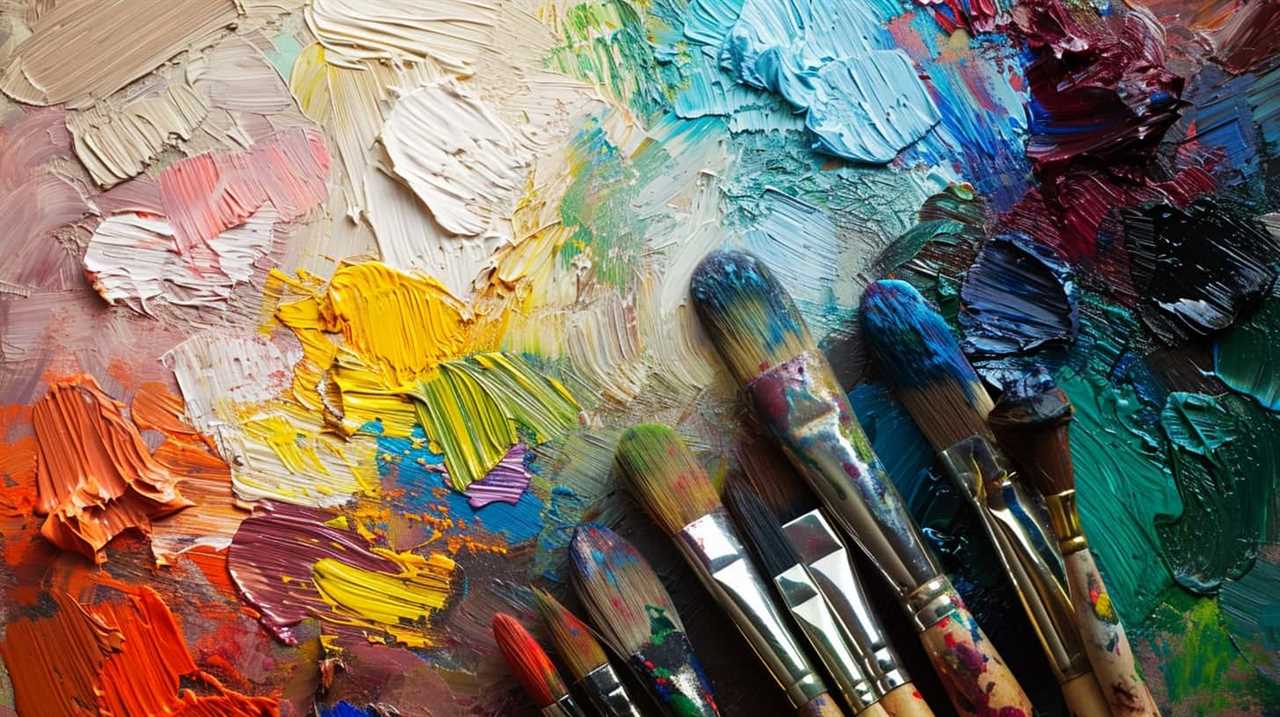
Dali’s Surrealist Approach to Creativity
Dali’s artistic influences played a significant role in shaping his surrealist approach to creativity. Surrealism, a movement that emerged in the early 20th century, sought to challenge conventional notions of reality and explore the subconscious mind.
Dali’s ability to tap into the depths of his imagination and create dreamlike, symbolic imagery revolutionized modern art. His legacy continues to inspire and influence artists today, leaving a lasting impact on the art world.
Dali’s Artistic Influences
As renowned artists, we highly value the creative process, and one of the most fascinating examples of an influential artistic approach can be found in Salvador Dali’s surrealist style. Dali’s influences and surrealist techniques revolutionized the art world, leaving a profound impact on future generations of artists.
Here are four key influences that shaped Dali’s unique artistic vision:

- Sigmund Freud: Dali was deeply influenced by Freud’s psychoanalytical theories, incorporating elements of the subconscious and dream analysis into his artworks.
- Renaissance Masters: Dali admired the technical skill and attention to detail displayed by artists such as Michelangelo and Leonardo da Vinci, which he incorporated into his own surrealist works.
- Spanish Baroque Art: Dali drew inspiration from the dramatic and theatrical style of Spanish Baroque painters, infusing his art with a sense of grandeur and spectacle.
- Pablo Picasso: Dali greatly admired Picasso’s ability to push the boundaries of artistic expression, and their friendship encouraged Dali to experiment with new forms and concepts.
Surrealism in Modern Art
Our exploration of surrealist art delves into the profound impact it has had on the creative process of renowned artists.
Surrealism in modern art, particularly Salvador Dali’s surrealist approach to creativity, has revolutionized the way artists perceive and express their ideas.
Surrealism, as an art movement, aims to tap into the unconscious mind and explore the realm of dreams, fantasies, and irrationality.
Dali’s artistic practice was deeply influenced by his dreams, which he believed held immense creative potential.
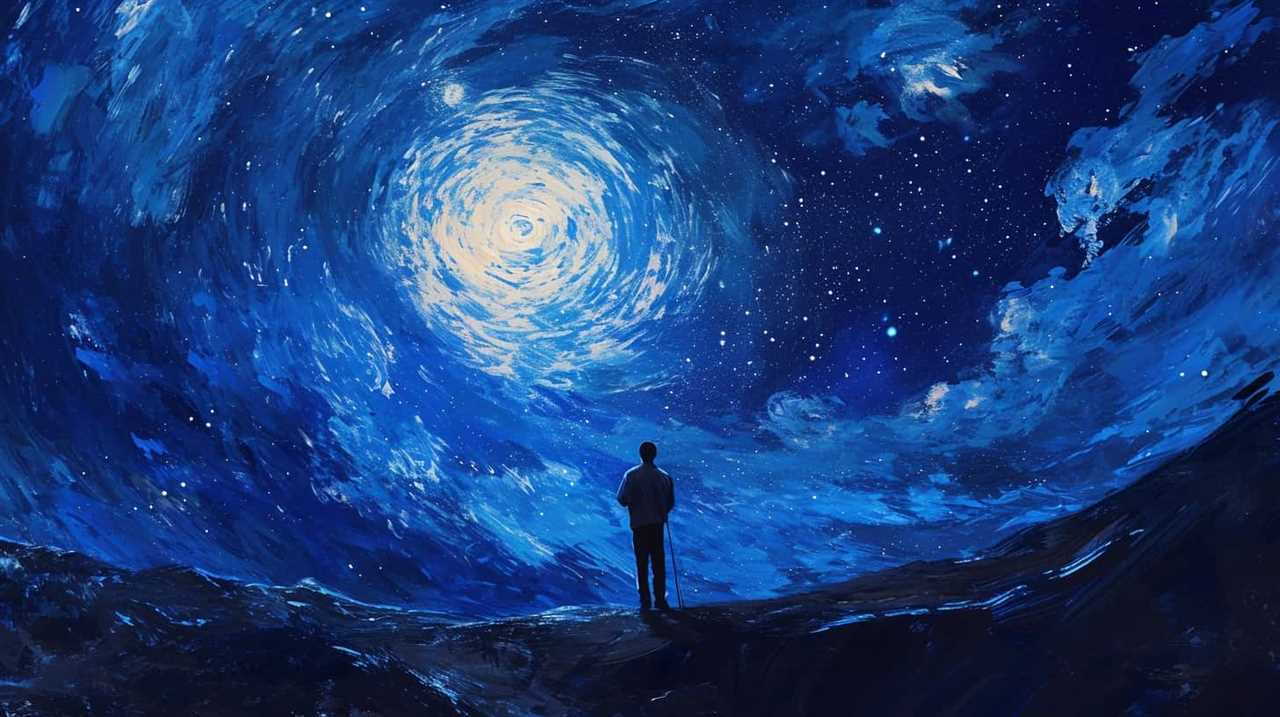
By incorporating dream-like elements, distorted forms, and unexpected juxtapositions in his work, Dali challenged conventional artistic norms and pushed the boundaries of imagination.
Surrealism in modern art not only provided artists with a new perspective on reality but also emphasized the role of dreams in artistic creation, allowing for the exploration of the subconscious and the liberation of the creative process.
Impact of Dali’s Legacy
Surrealist art, particularly Salvador Dali’s approach to creativity, has significantly influenced renowned artists by reshaping their perception and expression of ideas.
Dali’s influence on contemporary surrealism can be seen in the works of artists such as Yayoi Kusama, who uses repetitive patterns and vibrant colors to create dreamlike landscapes.

Another artist influenced by Dali is Damien Hirst, who explores themes of life and death through his provocative and surreal sculptures.
Dali’s exploration of the subconscious mind has also had a profound impact on artists like David Lynch, who incorporates dream logic and surreal imagery in his films.
Additionally, Dali’s legacy can be seen in the works of Cindy Sherman, who uses self-portraiture to challenge societal norms and explore the complexities of identity.
Through his innovative approach to creativity, Dali has left an indelible mark on the art world, inspiring generations of artists to push the boundaries of their imagination and embrace the surreal.
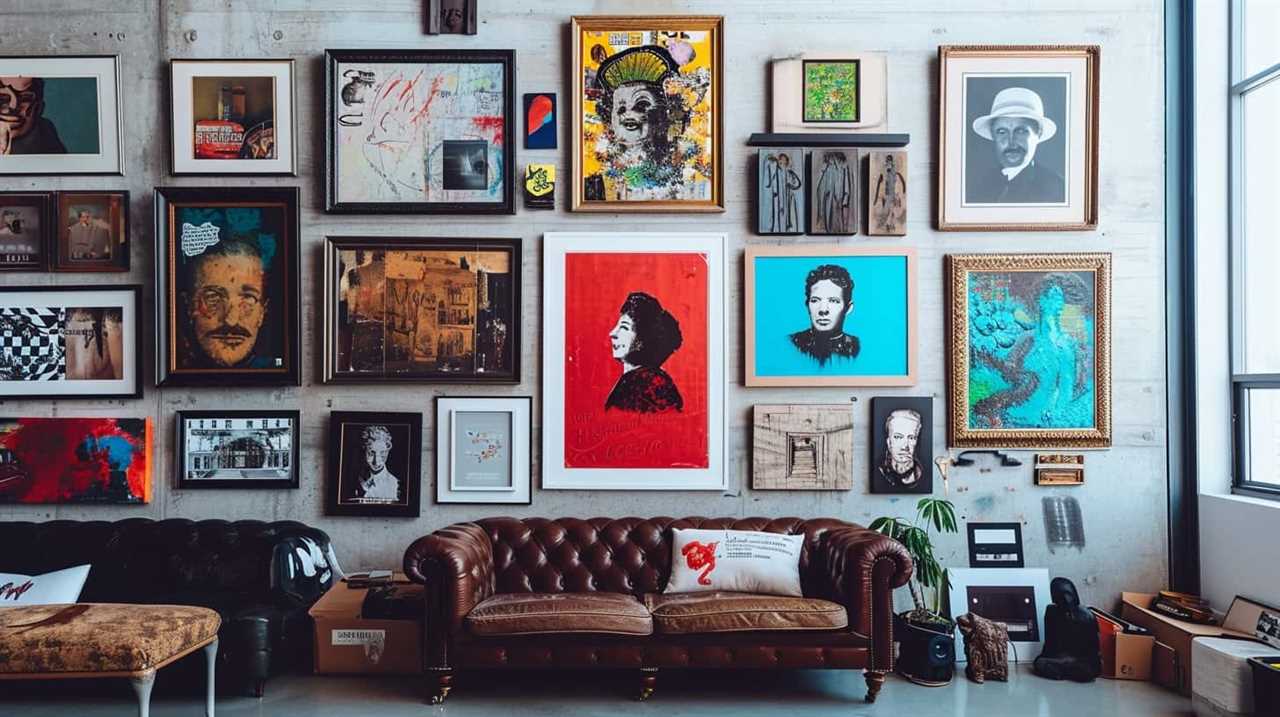
Frida Kahlo’s Embrace of Personal Expression
Frida Kahlo’s profound exploration of self through her art epitomizes the power of personal expression. Her unique ability to convey her innermost thoughts and emotions on canvas has made her one of the most celebrated artists of the 20th century. Through her art, Kahlo fearlessly delved into her personal experiences, physical pain, and emotional struggles, creating a body of work that continues to captivate audiences worldwide.
| Personal Expression | Artistic Inspiration |
|---|---|
| Kahlo’s art was a reflection of her innermost thoughts and emotions. She used her paintings as a means of self-expression and self-exploration. | Kahlo drew inspiration from a variety of sources, including Mexican folk art, surrealism, and her own personal experiences. |
| Her art served as a therapeutic outlet for her physical and emotional pain, allowing her to confront and process her own suffering. | Kahlo’s personal experiences, such as her tumultuous relationship with Diego Rivera and her struggles with her health, greatly influenced her artistic style and subject matter. |
| Kahlo’s art often depicted her own physical and emotional scars, symbolizing her resilience and strength in the face of adversity. | She drew inspiration from her Mexican heritage, incorporating elements of traditional Mexican art and culture into her work. |
Kahlo’s embrace of personal expression and her ability to use art as a medium for self-exploration continues to resonate with audiences today. Her art serves as a powerful reminder of the transformative power of creativity and the importance of embracing one’s own unique voice. By fearlessly sharing her own experiences and emotions, Kahlo inspires others to do the same and to find solace, healing, and empowerment through personal expression.
Warhol’s Pop Art Techniques and Concepts
Warhol’s Pop Art techniques and concepts were shaped by his artistic influences, such as commercial advertising and consumer culture. His use of bold colors, repetition, and appropriation of popular images challenged traditional notions of art and blurred the line between high and low culture.
This new approach had a profound cultural impact, reflecting the mass production and consumerism of the post-war era. Warhol’s experimentation with different materials and techniques pushed the boundaries of art, paving the way for future artists to explore new possibilities in their creative process.
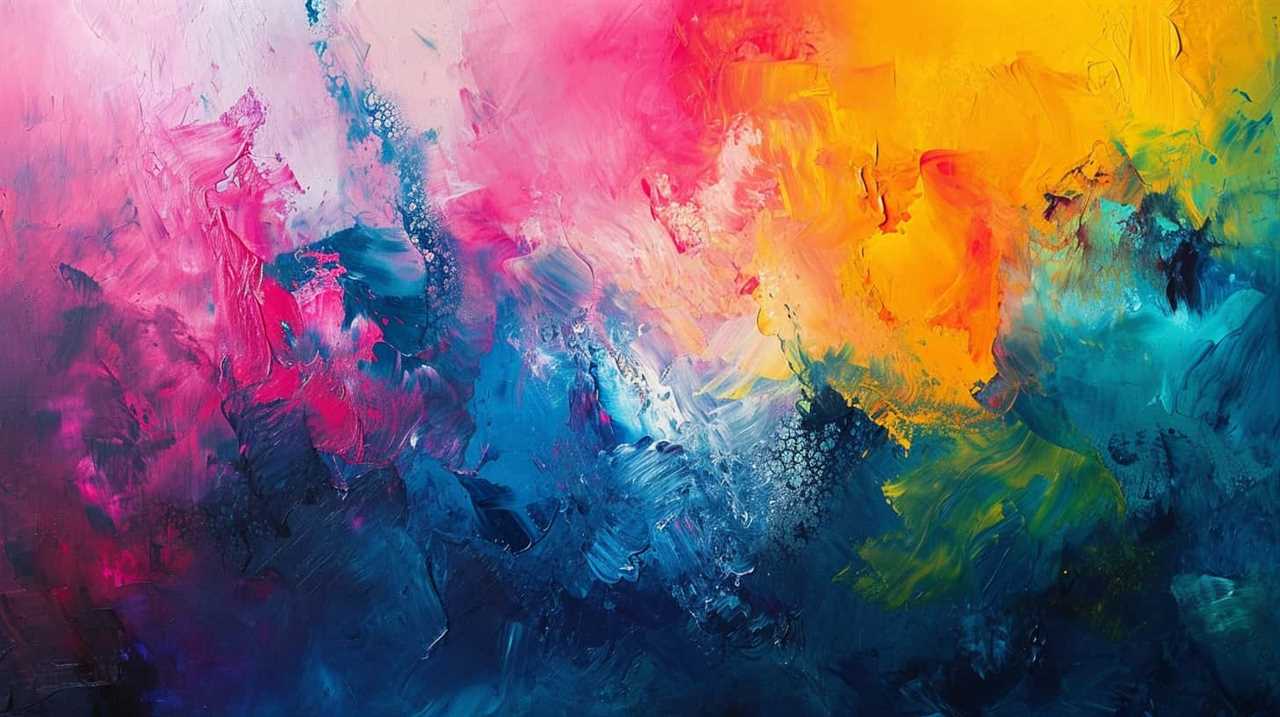
Warhol’s Artistic Influences
One of the major influences on our artistic process is the vibrant world of pop art, with its bold techniques and innovative concepts. Warhol’s artistic techniques have had a profound impact on contemporary art, shaping the way we approach art-making and challenging traditional notions of artistic creation.
Some of the key influences of Warhol’s art include:
- Appropriation: Warhol often borrowed images from popular culture, such as consumer products and celebrities, and recontextualized them in his art.
- Serial repetition: Warhol’s use of repeated images, such as his famous Campbell’s Soup Cans, challenged the idea of uniqueness and originality in art.
- Silkscreen printing: Warhol’s use of this technique allowed for mass production of his artworks, blurring the line between art and consumerism.
- Conceptual art: Warhol’s emphasis on ideas and concepts rather than technical skill revolutionized the art world, paving the way for future generations of artists to explore new possibilities.
Warhol’s influence continues to resonate in contemporary art, inspiring artists to push boundaries and challenge conventional artistic norms.
Pop Art’s Cultural Impact
Pop art techniques and concepts have had a significant cultural impact, shaping the way we perceive and engage with contemporary art. With its vibrant colors, bold imagery, and appropriation of popular culture, pop art emerged as a powerful form of social commentary in the mid-20th century.

Led by artists like Andy Warhol, pop art challenged traditional notions of art and blurred the boundaries between high and low culture. Warhol’s iconic works, such as his Campbell’s Soup Cans and Marilyn Monroe portraits, not only captured the essence of consumerism and celebrity culture, but also reflected the changing landscape of post-war America.
The evolution of pop art not only revolutionized artistic techniques, but also influenced other art movements and continues to inspire artists today. Its ability to engage with mass media and reflect the social and cultural climate of its time has solidified pop art’s place in art history.
Experimentation in Art
After exploring pop art’s cultural impact, we can now delve into the experimentation in art, specifically the techniques and concepts used by renowned artist Andy Warhol.
Warhol was known for pushing artistic boundaries and redefining the possibilities of art. His revolutionary approach to art can be seen in the following techniques and concepts:
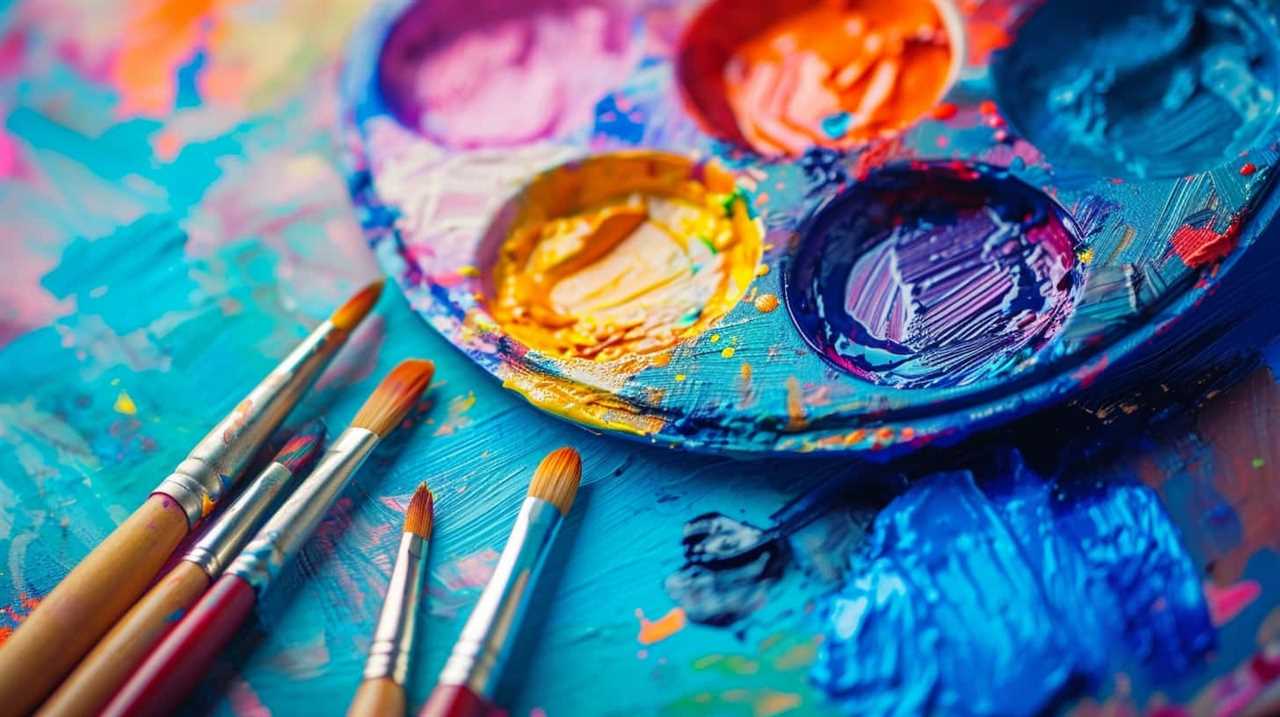
- Repetition and Multiplication: Warhol often used repetition and multiplication of images to challenge traditional notions of uniqueness and authenticity in art.
- Appropriation: Warhol borrowed images from popular culture and transformed them into works of art, blurring the lines between high and low culture.
- Screen Printing: Warhol popularized the screen printing technique, allowing him to mass-produce his artworks and challenge the notion of the singular, handcrafted masterpiece.
- Conceptual Art: Warhol’s art was often driven by ideas rather than technical skill, paving the way for the rise of conceptual art.
These techniques and concepts exemplify Warhol’s artistic exploration and his ability to push creative boundaries.
Moving forward, we’ll explore another renowned artist, Georgia O’Keeffe, and her connection between nature and creativity.
O’Keeffe’s Connection Between Nature and Creativity
Our connection with nature greatly influences our creative process, as seen in O’Keeffe’s artistic journey. O’Keeffe, renowned for her stunning depictions of nature, found immense inspiration in the natural world around her. She believed that by immersing oneself in nature, one could tap into a deeper well of creativity and artistic expression.
O’Keeffe’s deep connection with nature is evident in her iconic paintings of flowers, landscapes, and bones. Through her art, she sought to capture the essence and energy of the natural world, often magnifying the smallest details or abstracting the forms to convey her unique perspective. Her use of vibrant colors, bold compositions, and intricate details reveals her profound reverence for nature and its power to ignite the creative spirit.
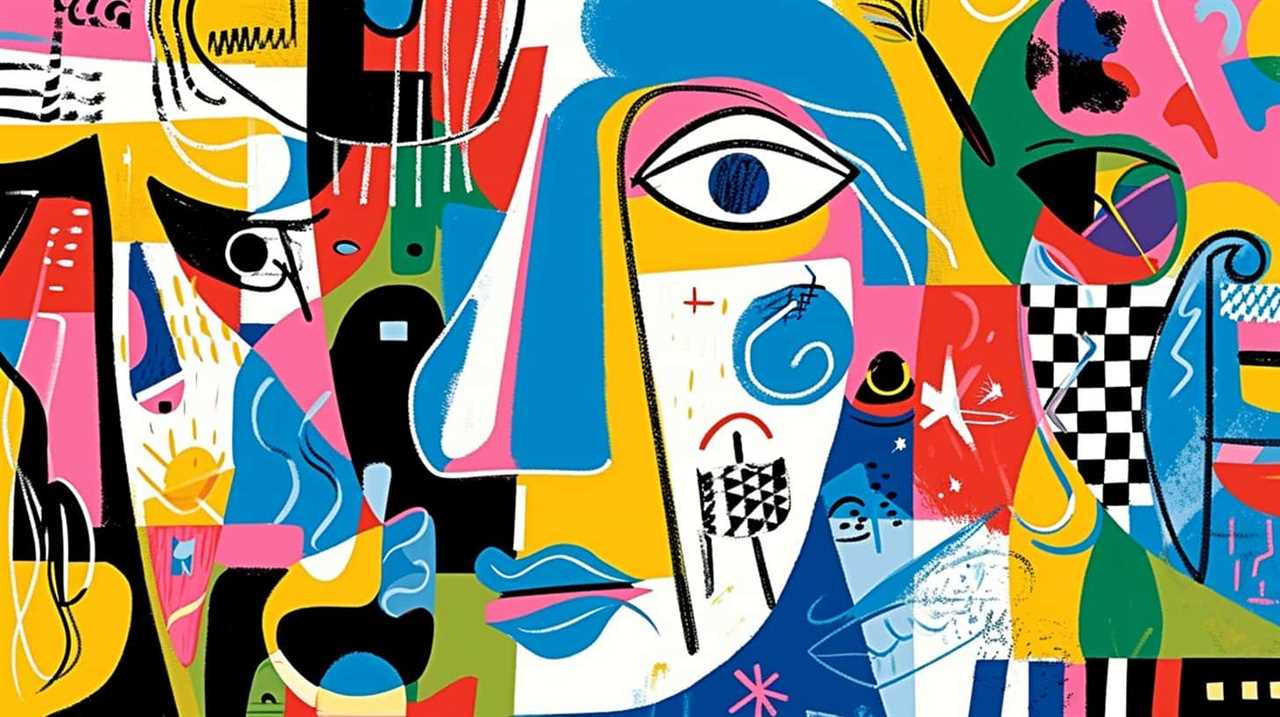
For O’Keeffe, nature wasn’t simply a subject to be painted, but a source of profound inspiration that fed her artistic process. She believed that by immersing herself in the natural world, she could tap into a wellspring of creativity and connect with something greater than herself. Her paintings reflect this connection, inviting viewers to experience the beauty and wonder of nature through her unique lens.
As we transition into the subsequent section about Pollock’s abstract expressionism and spontaneity, it’s important to note that O’Keeffe’s exploration of nature paved the way for artists to push the boundaries of artistic expression and find inspiration in unconventional sources.
Pollock’s Abstract Expressionism and Spontaneity
Pollock’s abstract expressionism and spontaneity offer a unique insight into the creative process of renowned artists. His revolutionary approach to art challenged traditional techniques and paved the way for a new form of expression. Here are four key aspects that highlight the significance of Pollock’s artistic technique:
- Spontaneity: Pollock’s paintings were characterized by his spontaneous and unrestrained brushstrokes. He’d pour, drip, and splatter paint onto the canvas, allowing his subconscious to guide his movements. This element of spontaneity in abstract art broke away from the constraints of academic art and encouraged artists to embrace their instinctive impulses.
- Emotional depth: Through his abstract expressionism, Pollock achieved a powerful emotional depth in his artwork. The chaotic and energetic lines and colors conveyed a sense of raw emotion, allowing viewers to connect with the artwork on a visceral level. This emotional intensity became a central feature of abstract expressionism.
- Physicality and action: Pollock’s technique involved physically engaging with the canvas. He’d move around the canvas, often working on the floor, and use his whole body to create his art. This physicality and action added a performative aspect to his work, making it a dynamic and immersive experience.
- Unconventional materials: Pollock experimented with unconventional materials such as industrial paint, sand, and broken glass. This exploration of different materials expanded the possibilities of abstract art and pushed the boundaries of traditional artistic mediums.
Pollock’s abstract expressionism and spontaneous approach to art opened up new avenues for artistic expression, inspiring future generations of artists to embrace their inner creativity and push the boundaries of artistic conventions.

Da Vinci’s Multidisciplinary Approach to Art
Da Vinci’s multidisciplinary approach to art demonstrates the versatility and depth of renowned artists’ creative processes. Leonardo da Vinci, the renowned artist and polymath of the Renaissance era, wasn’t only a painter but also a sculptor, architect, engineer, and scientist. His scientific approach to art was revolutionary for his time and continues to influence modern art.
Da Vinci’s scientific approach involved a meticulous study of nature and the human body. He believed that understanding the natural world was essential to creating realistic and lifelike art. Through his anatomical studies, he gained a deep understanding of human anatomy, which he incorporated into his paintings, making them anatomically accurate and emotionally engaging.
Furthermore, Da Vinci’s multidisciplinary approach allowed him to explore different techniques and mediums. He experimented with various painting techniques, such as sfumato and chiaroscuro, which added depth and realism to his artworks. His use of perspective and proportion also contributed to the visual impact of his paintings.
Da Vinci’s influence on modern art is undeniable. His scientific approach to art inspired subsequent generations of artists to approach their work with a similar curiosity and attention to detail. His emphasis on observation and experimentation paved the way for new artistic movements, such as the Renaissance and the scientific revolution. Artists today continue to draw inspiration from Da Vinci’s multidisciplinary approach, incorporating scientific principles and techniques into their own works.
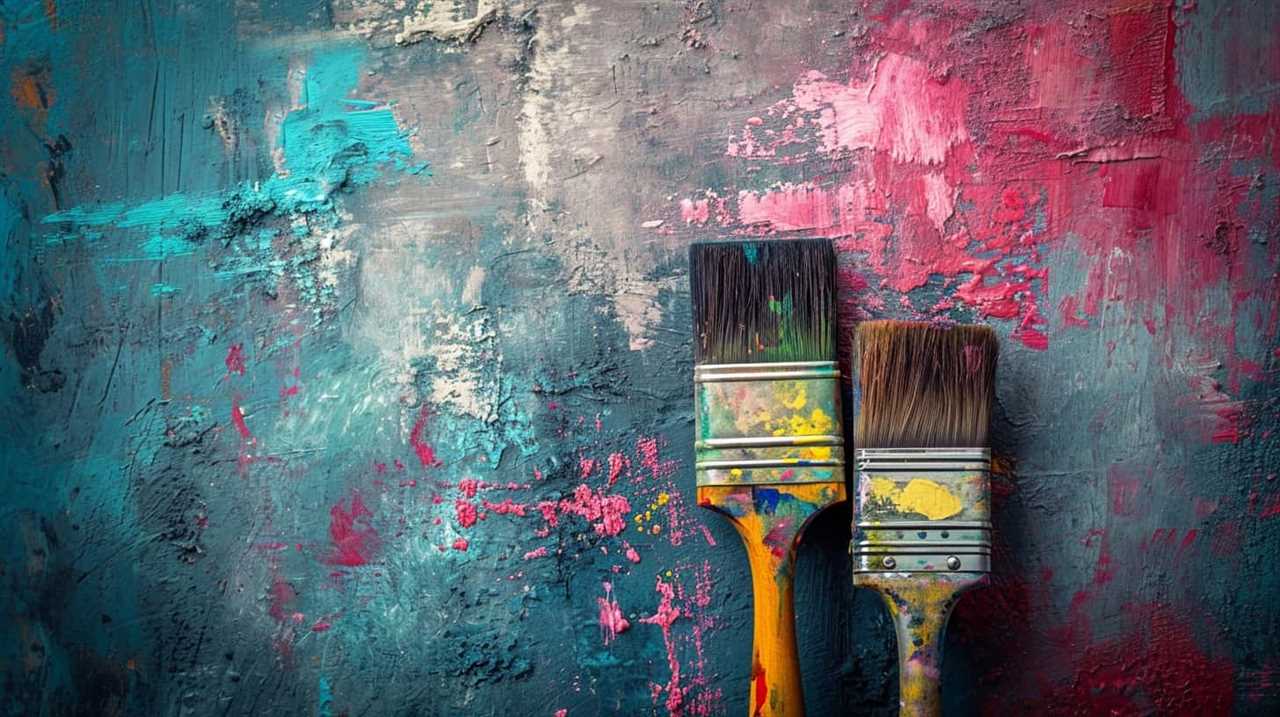
Matisse’s Use of Color and Shape in the Creative Process
Continuing the exploration of renowned artists’ creative processes, we now delve into Matisse’s masterful use of color and shape. Matisse’s use of color, shape, and form revolutionized the art world, showcasing his willingness to experiment and push boundaries. His vibrant and bold color choices, combined with his innovative manipulation of shape, created a visual language that was uniquely his own.
Matisse’s use of color was unparalleled, with his works often filled with intense, saturated hues that evoked emotion and captured the viewer’s attention. His ability to manipulate shape and form allowed him to create dynamic compositions that were visually striking and had a profound impact on the viewer.
Matisse’s experimentation in art pushed the boundaries of what was considered traditional, challenging the status quo and paving the way for future generations of artists to explore new possibilities. Similar to O’Keeffe’s connection between nature and creativity, Matisse’s use of color and shape allowed him to express his inner emotions and experiences through his art, creating a profound connection between the artist and the viewer.
Matisse’s mastery of color and shape laid the foundation for artists like Turner, who sought to capture light and atmosphere in their works.

Turner’s Capturing of Light and Atmosphere in Art
Building upon Matisse’s masterful use of color and shape, we delve into Turner’s remarkable ability to capture light and atmosphere in his art. Turner’s artistry lies in his unique talent for capturing the ephemeral qualities of light and the ever-changing atmosphere. Through his masterful brushwork and use of color, Turner was able to evoke a sense of realism and dynamism in his paintings.
One of Turner’s greatest achievements was his ability to depict the play of light on different surfaces, whether it be the glistening reflections on water or the subtle glow of sunlight filtering through clouds. His attention to detail and his keen observation of natural phenomena allowed him to create breathtakingly realistic renderings of light in his artworks.
To further illustrate Turner’s mastery of capturing atmosphere and the importance of light in his art, let us consider the following table:
| Painting | Description |
|---|---|
| "Rain, Steam and Speed" | Depicts a locomotive speeding through a rainy landscape, capturing the blurred motion and atmospheric effects of rain. |
| "The Fighting Temeraire" | Showcases a sunset scene with a ship being towed, highlighting the dramatic interplay between light and darkness. |
| "The Burning of the Houses of Lords" | Portrays the destructive force of fire, with the flames and smoke creating a chaotic and atmospheric setting. |
Turner’s ability to capture atmosphere and the transformative power of light in his art continues to inspire and awe artists and art enthusiasts alike. His dedication to depicting the natural world in all its splendor serves as a testament to the importance of observation and understanding of light and atmosphere in creating compelling works of art.
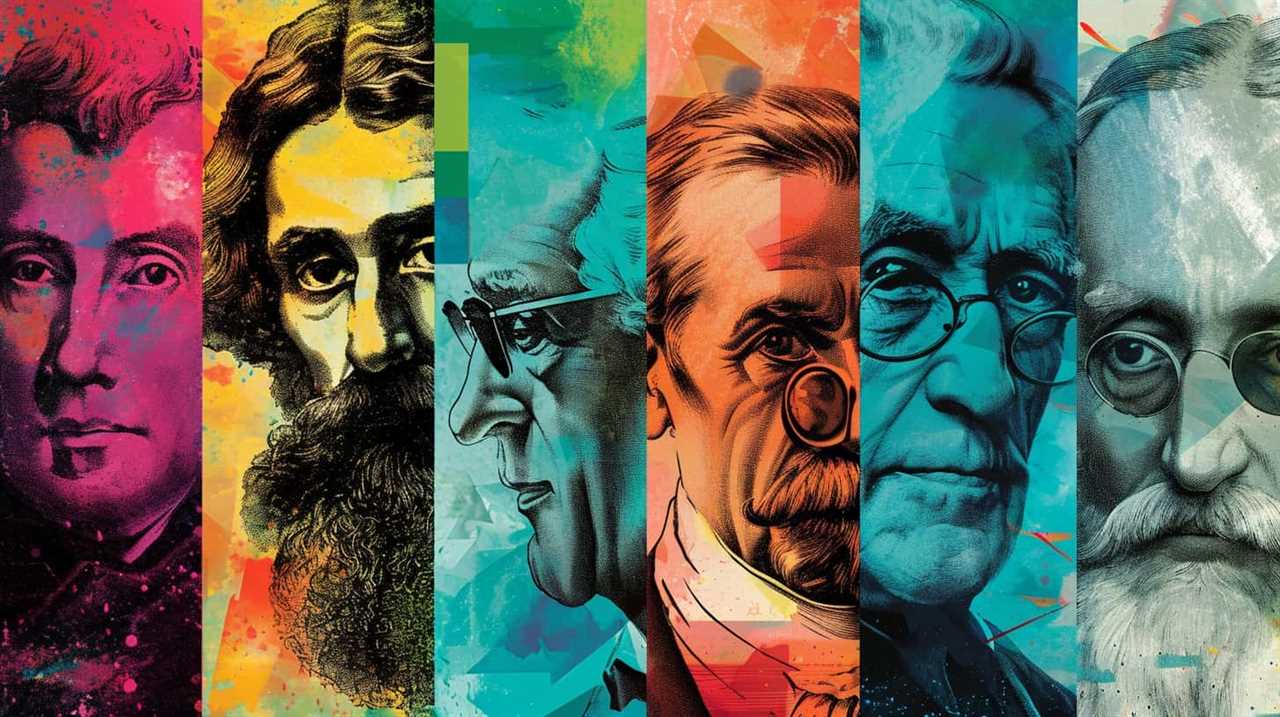
Frequently Asked Questions
How Did Picasso’s Perspective on the Creative Process Influence His Artistic Style?
Picasso’s perspective on the creative process greatly impacted his artistic style. His innovative approach and willingness to experiment allowed him to push boundaries and create groundbreaking works of art that continue to inspire and influence artists today.
What Were Some of the Specific Sources of Artistic Inspiration for Van Gogh?
Van Gogh’s artistic inspiration stemmed from a variety of sources. His influences included the vibrant colors of the natural world, the works of other artists, and his own personal experiences and emotions.
How Did Monet’s Experimentation With Different Artistic Techniques Contribute to His Success?
Monet’s experimentation with different artistic techniques played a crucial role in his success. By constantly pushing boundaries and exploring new methods, he was able to create innovative and groundbreaking works that captivated audiences and solidified his place among the artistic elite.
Can You Explain Dali’s Surrealist Approach to Creativity and How It Impacted His Artwork?
Dali’s surrealist approach to creativity, characterized by exploration and subconscious influences, greatly impacted his artwork. Through symbolism and dream-like qualities, he pushed the boundaries of conventional art, creating a unique and captivating visual experience for his audience.
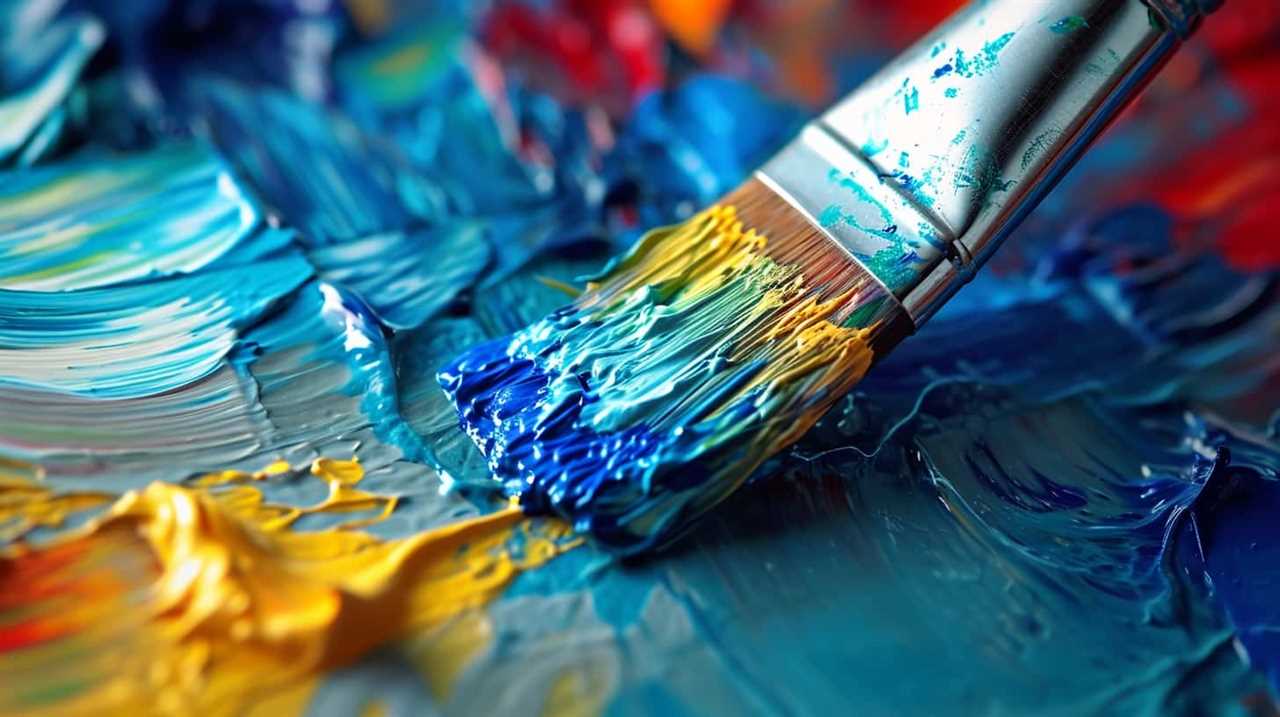
How Did Frida Kahlo’s Personal Expression in Her Art Contribute to Her Significance as an Artist?
Frida Kahlo’s personal expression in her art contributed to her significance as an artist by allowing her to explore themes of identity, pain, and resilience. Her impact and legacy continue to inspire and resonate with audiences worldwide.
Conclusion
In conclusion, renowned artists value the creative process because it’s the lifeblood of their artistic endeavors. Like a river flowing through their minds, it brings forth inspiration, experimentation, personal expression, and spontaneity.
It’s a multidisciplinary journey where color, shape, light, and atmosphere intertwine. Just as a master chef cherishes the ingredients that create a delectable dish, these artists cherish the creative process as the essential ingredient that nourishes their artistic souls.
Lauren’s talent in writing is matched by her passion for storytelling. Her love for books and deep understanding of culture and entertainment add a distinct flavor to her work. As our media and press contact, Lauren skillfully bridges the gap between afterQuotes and the broader media landscape, bringing our message to a wider audience.

